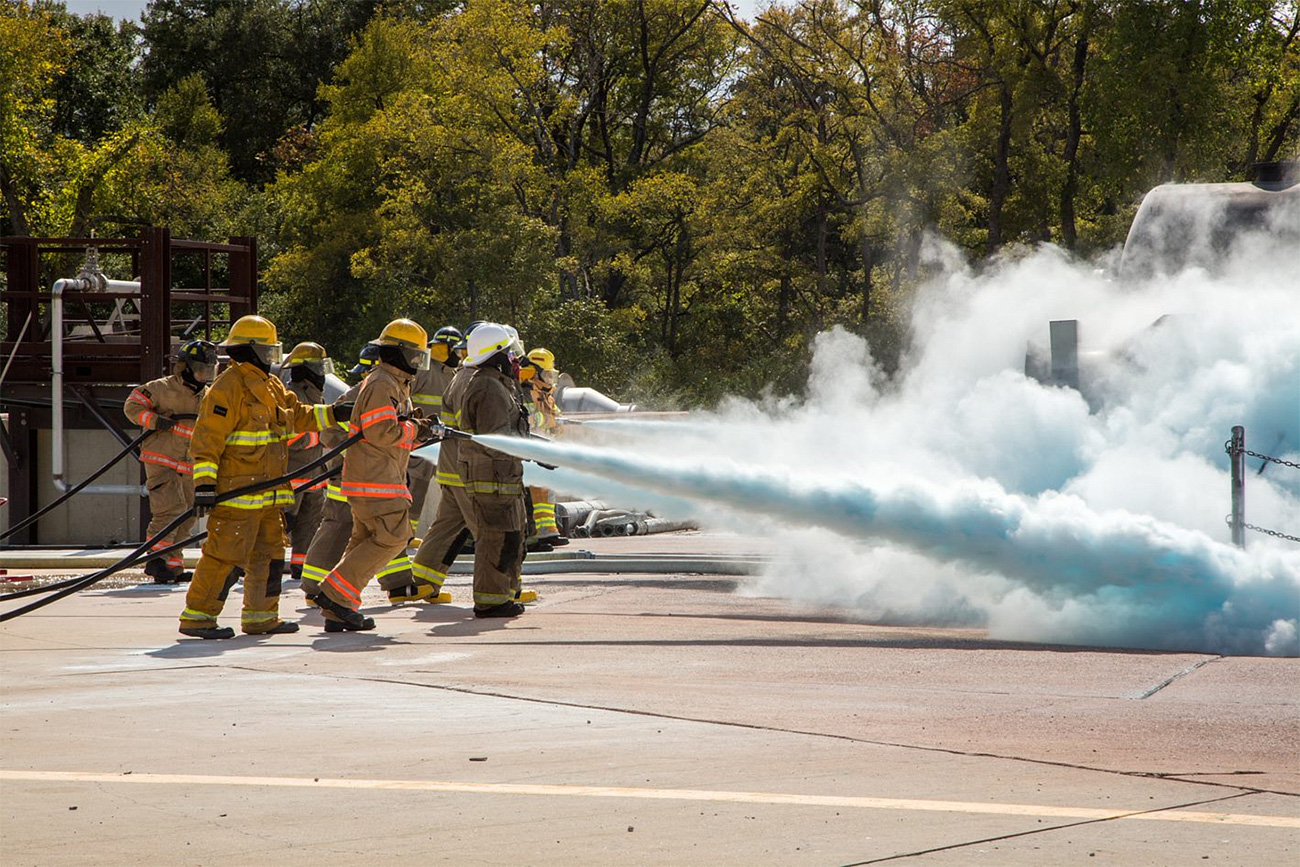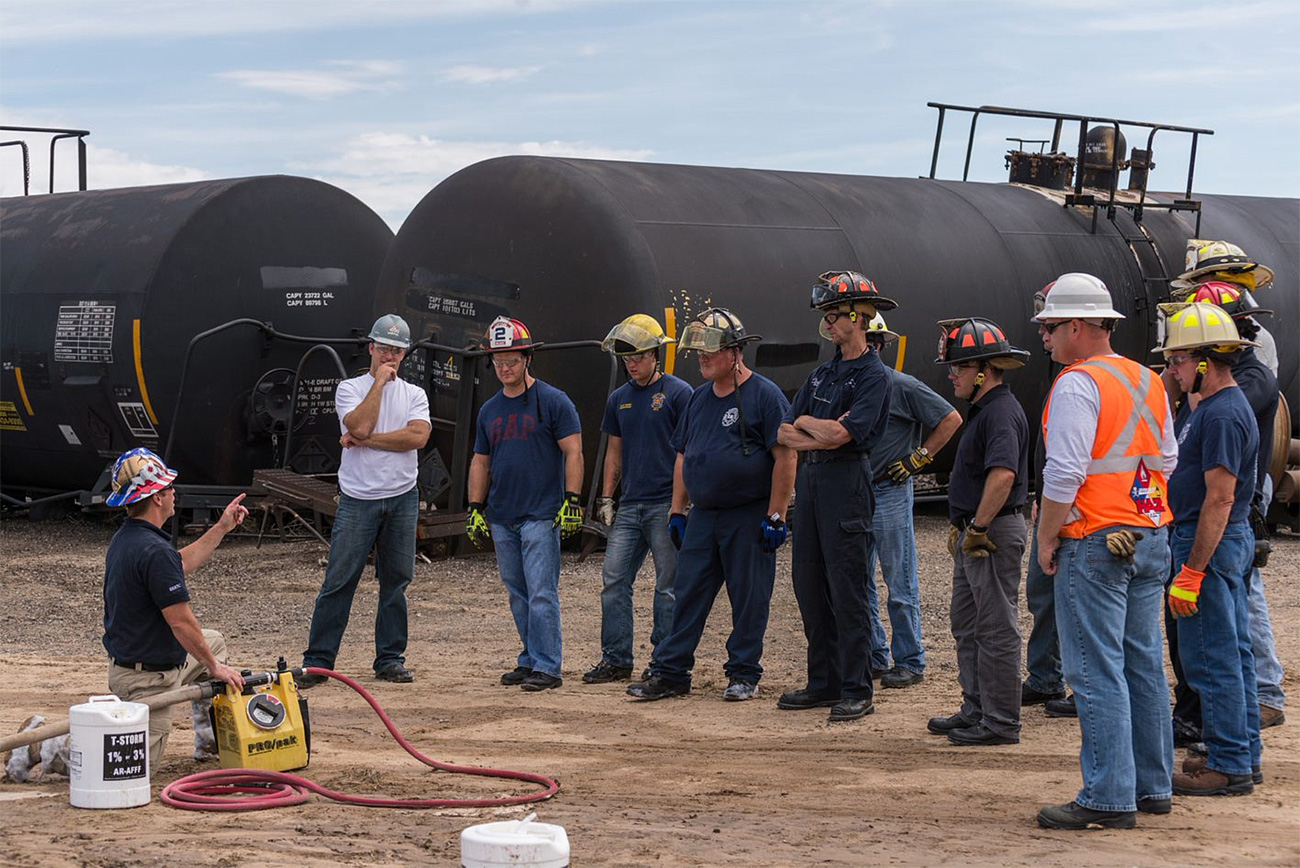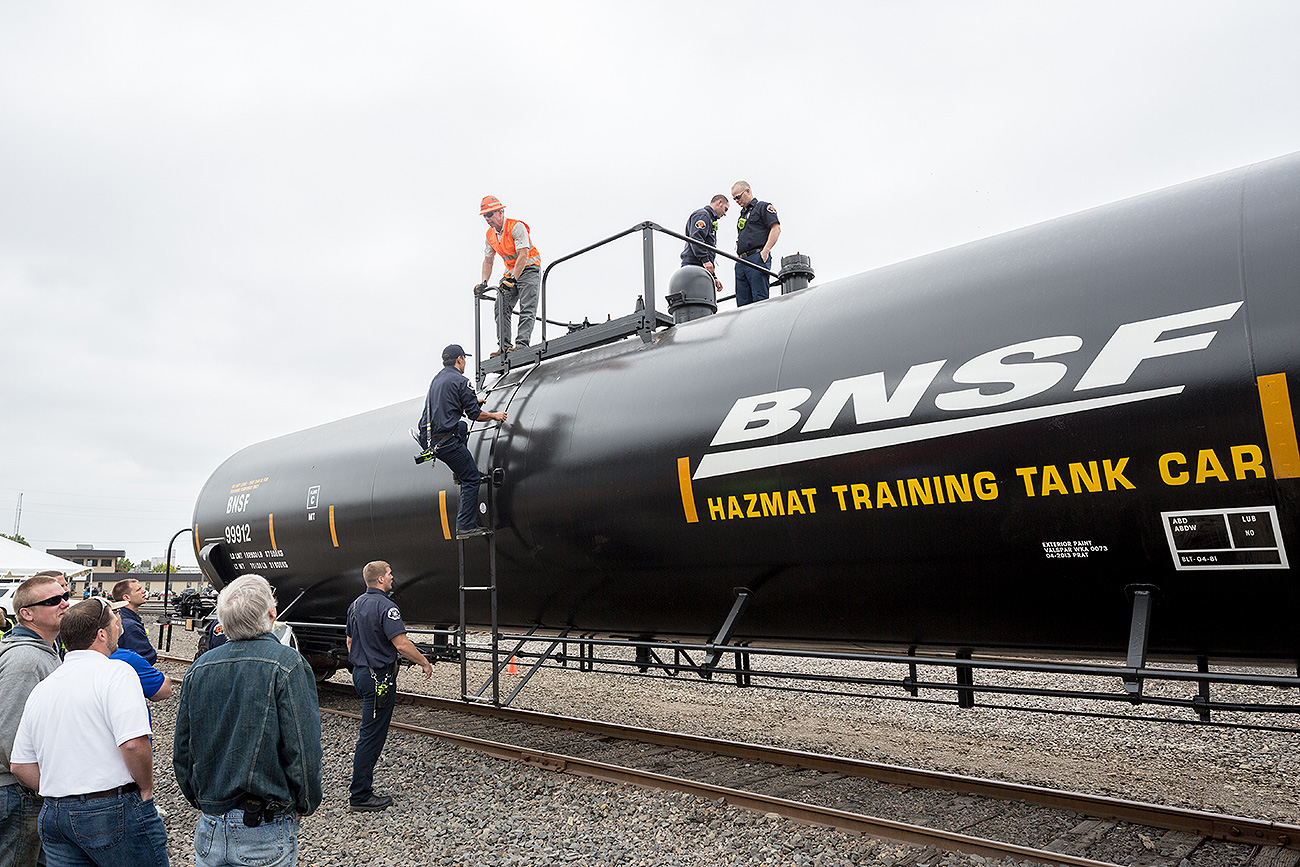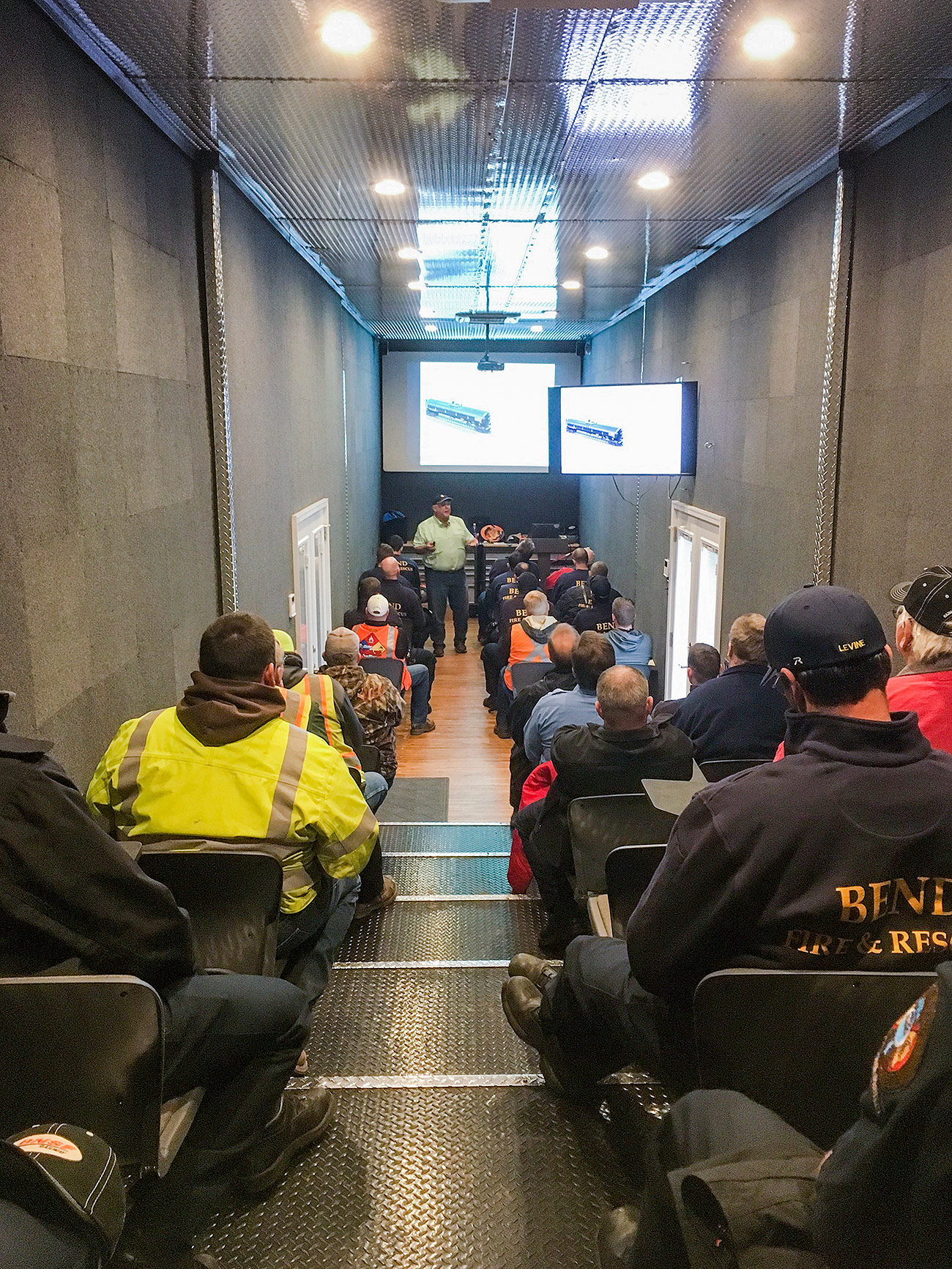
BNSF on the front line of first responder training
No matter what we are moving, nothing is more important than safety at BNSF. With all shipments, our core focus is always on safety through prevention, mitigation and response to any potential incident. That's why every year we offer specialized training for local first responders in communities and tribal nations located along our network.
"At BNSF we recognize a safe and secure rail network is essential to our nation's future and important to our employees, customers and communities across our network," said Pat Brady, general director, Hazardous Materials. "We understand the responsibility that comes with being an indispensable part of the transportation system."
Often people don't realize that as common carriers, railroads are required under federal law to make reasonable accommodations to transport any commodity, including hazardous materials, as long as government standards are met. Last year, we safely transported more than 10 million units of freight that make up the necessities for everyday life.

"We keep our guard up and follow safety protocols so loads reach their destinations intact," Brady said. "In fact, 99.999 percent of all BNSF customer hazardous materials shipments are delivered without incident."
Being prepared and preventing incidents is the best way to keep everyone safe. We recognize that incidents can occur, and that strong emergency response can help minimize their scope and duration.
"We train about 8,000 first responders each year," Brady said. "Even though we have our own network of hazmat responders strategically located along our rail lines, the partnership with local and tribal emergency responders is critical when there is an incident."

Since the program began 20 years ago, BNSF has trained more than 100,000 emergency responders on how to respond to a rail hazmat incident.
"It's important to us that the agencies that take our training courses get what they need from the training and that we can accommodate their schedules," Brady added. "In some remote areas, the fire departments are made up entirely of volunteers, so we can take our mobile training unit to them or arrange for them to participate in web-based training."
No matter the course, our hazmat team has worked to create the best scenario- and decision-based training based on feedback from the men and women who handle these incidents.
As an example, first responders can be trained on how to place booms in the event of an incident near a waterway. During a recent training exercise in the Pacific Northwest, tribal first responders learned how to deploy booms.
BNSF's first responder training includes classes designed to teach first responders about rail equipment, safe transportation of chemicals by rail and hazard communication. Community training exercises include how to identify hazardous materials, hands-on response exercises and where responders can quickly find information about the product involved in an incident.
"The level of expertise and effort put into the training we have been involved in is outstanding and has definitely improved our fire department's ability to both safely and effectively respond to railway hazmat emergencies," said Doug Spears, chief, Saginaw, Texas, Fire Department. "Through these training programs we have established a partnership with BNSF that will be invaluable if and when we are faced with a railway incident."
Training responders on their own turf
Visions of training may bring to mind a dry-erase board or a projected presentation. These classes aren't ordinary though, and neither is the classroom. In 2016, BNSF added a mobile classroom made out of a modified boxcar, so when the classroom rolls into town, trainees enter the car to theater-style seating for up to 37 people. Frequently, we need to conduct trainings at locations that either don't have a fire department training room or have a training room that is very far from a BNSF yard or siding where our training tank car is located.

Because the boxcar classroom comes to students, municipalities are able to save both time and the cost of having participants travel elsewhere for training while providing high quality, safety-critical hazmat training in rural areas.
The mobile classroom travels to various locations throughout the year accompanied by a training tank car that has been fitted with the various valves used on different tank car types for more hands-on learning. Every year we host at least 100 classes in our mobile classroom setting. BNSF also provides web-based training for first responders along our network at no cost.
Beyond first responder training
Our relationship with local first responders doesn't end with training. The rail industry developed the AskRail app so fire departments can immediately access information about a train involved in an incident in their area.
"The mobile app brings both speed and reliable information to the palm of your hand, with a direct link to accurate, real-time data," Brady said. "If first responders can't locate railroad crews, they can simply enter a rail car ID into the app to see if the car or train is carrying hazardous material. If the hazardous materials are being transported responders can use the app to determine how to respond to the incident safely."
The app is designed to enhance safety after training by decreasing on-site risks and helping responders make informed decisions at the site of an incident. We also offer SECURETRACK, a real-time freight tracking program, to fusion centers, which are state and regionally sanctioned intelligence gathering, analysis and dissemination facilities located across the U.S. Emergency responders can also use BNSF's hazmat website to participate in online training, download a summary of BNSF's System Emergency Response Plan, or request a Hazmat Traffic Flow Report for their city or county.
BNSF recognized for community training efforts
BNSF was honored with the 2017 Transportation Community Awareness and Emergency Response (TRANSCAER) National Achievement Award in recognition of our efforts to ensure the safe transportation of hazardous products and our first responder training efforts. This is the 18th National Achievement Award BNSF has received from TRANSCAER®. In 2017, BNSF conducted more than 350 first responder training sessions reaching more than 8,000 emergency responders all across our rail network.
"The safety of our employees and the communities in which we operate is extremely important to us," Brady said. "We are pleased that TRANSCAER continues to acknowledge our commitment to work closely with emergency responders to ensure safe and efficient responses to transportation incidents."